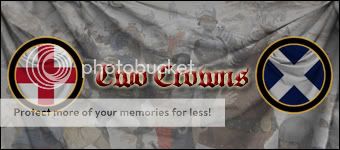The Houses of Two Crowns
The most important part of Two Crowns is, apart from the game play, the men who make up the Houses within it. Ranging from the powerful to the courageous, the men who made up the Wars of the Roses and the Scottish civil strife played great parts in the drama that unfolded, be it the Douglases who where unceremoniously murdered more than once, or the Beaufort family, staunch supporters of the House of Lancaster. What made the wars so interesting was the games of political one-upsmanship that the houses involved played with one another constantly, jostling and bickering over who should have the largest scraps.
Below is a full list of the houses involved in the conflicts in England and Scotland during the latter half of the 15th century that will feature in Two Crowns : Total War.
The English Houses
From left to right, top to bottom (House of Lancaster, House of York, House of Tudor, House of Stanley, House of Stafford, House of Percy, House of Neville, House of Holland, House of Herbert, House of de Mowbray, House of de la Pole, House of Courtnay, House of Beaufort and House of Clifford)
The Kingdom of England boasts numerous powerful families from the very tip of Cornwall to the border with the Kingdom of Scotland, from Wales to Eastern Ireland. Hostilities over the right to the throne grew from the overthrow of Richard II by his cousin Henry Bolingbroke, the Duke of Lancaster, in 1399. Since then the kingdom has been ruled over by the House of Lancaster, boasting the famous warrior king Henry V as one of its more successful monarchs. The current king, Henry VI, is far from being in the mould of his father, plagued with the mental illness of his grandfather King Charles VI of the Kingdom of France.
The Duke of York, Richard Plantagenet, has being vying for power in the court and was granted the title of Lord Protector when Henry suffered his first bout of mental illness. The Queen, Margaret of Anjou, does not approve of York’s new position and the imprisonment of the Duke of Somerset, Edmund Beaufort. Richard, however, has been removed from his position as Lord Protector and cast from the court as Henry recovers from his mental illness, this is an act that will spark the turbulent period ahead.
Not everybody is fighting over the crown or power over it, the House of Neville and the House of Percy have been squabbling for years and this has, on occasion, spilled into a violent argument. The Duke of York’s backing of the House of Neville against the House of Percy has granted the Yorkist a strong ally, the family who boasts the Earl or Warwick, Richard Neville, later known as “The Kingmaker” for his power over the realm upon the accession of Edward Plantagenet, the Earl of March and son of the Duke of York.
All over the country, great families move to support either the House of Lancaster or the House of York, whilst others look to use the impending conflict to their own advantage and to increase their own influence. Many will make a name for themselves in different ways, the Beauforts for their loyalty to the Lancastrian cause, leading to their execution for betrayal by the Yorkists, the Nevilles who for a time wielded more power than King Edward IV but later turned on the king and sided with the Lancastrians, the Percies who were often known as the Kings of the North, the House of Tudor who would later launch their own bid for the crown, even though it was a weak one, and the other houses who would all play a part in the 30 years of civil conflict known today as the Wars of the Roses.
The Scottish Houses
From left to right, top to bottom (House of Stuart, House of MacKenzie, House of MacDonald, House of Gordon, House of Douglas and House of Campbell)
The Kingdom of Scotland could be said to finally have the chance to get one over their arch-nemesis, the Kingdom of England, as it slips into civil disarray. Unfortunately for Scotland, things aren’t to rosy in their own realm either. Constant squabbles between the Douglases and most of King James II court. The Douglases, in fact, have been subject to numerous murders at the hands of political rivals and even the king himself on one occasion. Between all this political backstabbing, the Douglases themselves have actually massed their forces and marched on Edinburgh, an act that would suggest the King does not yet wield total control over Scotland and is certainly not in any position to exploit the English weakness just yet.
The House of Douglas is not the only powerful clan who resides within Scotland under the House of Stuart, the House of MacDonald for example wield great power over the Scottish islands whilst the Gordons have near total control of much of central eastern Scotland. The House of MacKenzie has great influence in the north of the kingdom whilst the Campbell’s have found new power as Lord Campbell’s and have begun growing in power in Argyll.
The House of Stuart is by no means weak, however, and are in a position to put their rivals to rest if they act carefully. It is perhaps the best option for the Stuart’s to look to secure their own realm, and maybe then they can move against their old foes, the English, if they remain in a weakened state.












 Reply With Quote
Reply With Quote
Bookmarks